- Home |
- Why With Us |
- About Us |
- Booking |
- Contact Us |
- Site Map
- Home
-
Nepal
-
Trekking
- Arun Valley with Gokyo Lakes
- Everest Base Camp Trek
- Everest- A Living Culture Exploration
- Everest Explore
- Everest Base Camp (via Thame) Trek
- Everest Base Camp with Kala Patthar
- Everest Comfort Trek
- Everest High Passes with Ama Dablam Base Camp
- Everest Mani Rimdu Festival Trek
- Everest Nagpa La Trek
- Everest with three high passes
- Gokyo Ri, Chola Pass & Chukung Ri with Kala Patthar
- Gokyo with Everest Base Camp
- Jomsom - Muktinath
- Jomsom - Muktinath
- Khayar Lake Trek
- Manaslu and Tsum Valley with Larkya La
- Upper Mustang Trek
- Manaslu High Circuit
- Manaslu, Tilicho Pass & Upper Mustang
- Annapurna Base Camp Trek
- The Annapurna Circuit Trek
- Annapurna Panorama
- Nar and Phu Valley Trekking
- Nepal Rhododendron Trek
- Royal Trek
- Saribung Trek and Expedition
- Annapurna Sanctuary Trek
- The Annapurna Sunrise Trek
- Expedition
-
Rafting
-
Peak Climbing
-
Tours
- Kathmandu-Chitwan-Jungle Tour with visit to Pokhara
- Dawn to Dusk Tour
- Historical, Natural & Cultural Tour with Camping
- Kathmandu Valley Temple Tour
- Temple - Panorama - Jungle Tour
- Taste of Nepal
- Central Nepal Tour
- Explore Nepal Tour & Trek
- Nepal Cross-country Tour
- Best of Nepal Tour & Treks
- Kathmandu valley rim Tour & Treks
- Nepal Culture Tour
- Introduction to Nepal Tour & Treks
- Nepal at a glance Tour & Treks
- Wonders of Nepal Tour & Treks
- Glimpses of Nepal Tour & Treks
- Through the Silhouette Tour & Treks
- Tent and Temple Tour
- Kathmandu-Chitwan-Pokhara Tour
- Historical, Cultural City and Jungle Tour
- Nepal Wildlife Tour
- Nepal Panorama Historical Tour
- Nepal Adventure Tour
- Nepal Pilgrimage Tour
- Ghalegaun-Ghanapokhara Homestay Tour
- Jungle Safari
- Adventure Sports
-
Trekking
- Tibet
-
Bhutan
-
India
- Yoga Tour
- About Us
-
The Great Himalayan Trail
-
Short Tours/Treks

Fauna: By the Region
The Terai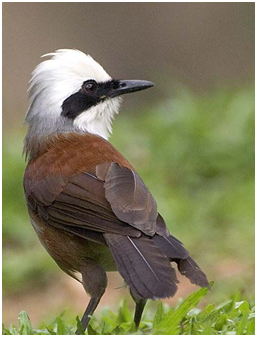 Eight species of storks and somewhat fewer species of cranes have been identified along the watercourses of the Kali Gandaki and the Dudh Kosi rivers. Herons and egrets are quite common in the tropical and sub-tropical areas. Migratory waterfowl can be seen at the Kosi Barrage in the eastern Terai and in the Chitwan and Bardia areas. The bar-headed goose has been observed at altitudes of about 8,000 metres. Timalids or babblers and laughing thrushes are common in the tropical Terai and the upper temperate forest.Royal Chitwan National Park of the Inner Terai and Royal Bardia National Park in the western Terai protect sufficient habitat to sustain viable populations of the royal Bengaltiger. The one-horned rhino, the largest of three Asian species, is a denizen of the grasslands of the Inner Terai, specifically the Chitwan Valley, although it has also been reintroduced to Royal Bardia National Park. The western part of the Terai and Chure hills is home to the only wild elephants to be found in Nepal. Two indigenous species of crocodile – the gharial and marsh mugger – inhabit the Terai. The majority of snake species, including venomous ones such as cobras, vipers and kraits are also found in the Terai.
Eight species of storks and somewhat fewer species of cranes have been identified along the watercourses of the Kali Gandaki and the Dudh Kosi rivers. Herons and egrets are quite common in the tropical and sub-tropical areas. Migratory waterfowl can be seen at the Kosi Barrage in the eastern Terai and in the Chitwan and Bardia areas. The bar-headed goose has been observed at altitudes of about 8,000 metres. Timalids or babblers and laughing thrushes are common in the tropical Terai and the upper temperate forest.Royal Chitwan National Park of the Inner Terai and Royal Bardia National Park in the western Terai protect sufficient habitat to sustain viable populations of the royal Bengaltiger. The one-horned rhino, the largest of three Asian species, is a denizen of the grasslands of the Inner Terai, specifically the Chitwan Valley, although it has also been reintroduced to Royal Bardia National Park. The western part of the Terai and Chure hills is home to the only wild elephants to be found in Nepal. Two indigenous species of crocodile – the gharial and marsh mugger – inhabit the Terai. The majority of snake species, including venomous ones such as cobras, vipers and kraits are also found in the Terai.
The hills and mountains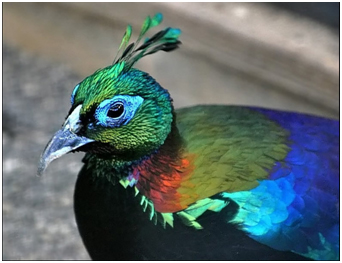 Some of Nepal’s most beautiful flora and fauna can be found in its hills and mountains. Birds of prey and carrion eaters of all sizes are found in the Himalayas. These include the Eurasian kestrel, Himalayan griffon, and a large number of eagle species such as the golden eagle. Of the over 600 species of birds that can be found here, there are six species of pheasant in Nepal, including the impeyan pheasant, which is the national bird. The yellow-billed cough is known to enter mountaineers’ tents high on Everest. The snow leopard inhabits inhospitable domains above the tree line, competing for space with packs of wolves. Also found here are the spotted leopard, barking deer, Himalayan tahr and the blue sheep. The omnivorous Himalayan black bear rarely attacks humans, but is a bane to crops. Jackals can be found from the Terai to the alpine region. The mountain pit viper and a few other non-venomous species of snakes can also be found in the higher regions.
Some of Nepal’s most beautiful flora and fauna can be found in its hills and mountains. Birds of prey and carrion eaters of all sizes are found in the Himalayas. These include the Eurasian kestrel, Himalayan griffon, and a large number of eagle species such as the golden eagle. Of the over 600 species of birds that can be found here, there are six species of pheasant in Nepal, including the impeyan pheasant, which is the national bird. The yellow-billed cough is known to enter mountaineers’ tents high on Everest. The snow leopard inhabits inhospitable domains above the tree line, competing for space with packs of wolves. Also found here are the spotted leopard, barking deer, Himalayan tahr and the blue sheep. The omnivorous Himalayan black bear rarely attacks humans, but is a bane to crops. Jackals can be found from the Terai to the alpine region. The mountain pit viper and a few other non-venomous species of snakes can also be found in the higher regions.
Nepal's flora and fauna can be divided into four regions:-
1. Tropical Deciduous Monsoon Forest:
2. Subtropical Mixed Evergreen Forest:
3. Temperate Evergreen Forest:
4. Subalpine and Alpine Zone:
Ranging from the subtropical forests of the Terai to the great peaks of the Himalayas in the north, Nepal abounds with some of the most spectacular sceneries in the whole of Asia, with a variety of fauna and flora also unparalleled elsewhere in the region. Between Nepal’s geographical extremes, one may find every vegetational type, from the treeless steppes of the Trans-Himalayan region in the extreme north and the birch, silver fir, larch and hemlock of the higher valleys to the oak, pine and rhododendron of the intermediate altitudes and the great sal and sissau forests of the south.
The rolling densely forested hills and broad Dun valleys of the Terai along with other parts of the country were formerly, renowned for their abundance and variety o wildlife. Though somewhat depleted as a result of agricultural settlements, deforestation, poaching and other causes, Nepal can still boast richer and more varied flora and fauna than any other area in Asia.
For practical purposes, Nepal’s flora and fauna can be divided into four regions:-
1. Tropical DeciduousMonsoon Forest: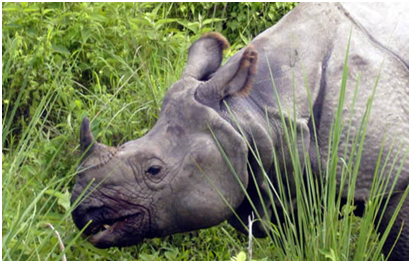 This includes the Terai plains and the broad flat valleys or Duns found between successive hill ranges. The dominant tree species of this area are Sal (Shorea Robusta), sometimes associated with Semal (Bombax malabricum), Asna (Terminalia termentosa), Dalbergia spp and other species, and Pinus rosburghi occurring on the higher ridges of the Churia hills, which in places reach an altitude of 1800m. Tall coarse two-meter high elephant grass originally covered much of the Dun valleys but has now been largely replaced by agricultural settlements. The pipal (ficus religiosa) and the banyan (ficus bengalensis) are to be noticed with their specific natural characteristics. This tropical zone is Nepal's richest area for wildlife, with gaurs, buffaloes, four species of deer, tigers, leopards and other animals found in the forest areas rhinoceros, swamp deer and hot deer found in the valley grasslands and two species of crocodile and the Gangetic dolphin inhabiting the rivers. The principal birds are the peacock, jungle fowl and black partridge, while migratory duck and geese swarm on the ponds and lakes and big rivers of Terai. Terai forests are full of jasmin, minosa, accecia reeds and bamboo.
This includes the Terai plains and the broad flat valleys or Duns found between successive hill ranges. The dominant tree species of this area are Sal (Shorea Robusta), sometimes associated with Semal (Bombax malabricum), Asna (Terminalia termentosa), Dalbergia spp and other species, and Pinus rosburghi occurring on the higher ridges of the Churia hills, which in places reach an altitude of 1800m. Tall coarse two-meter high elephant grass originally covered much of the Dun valleys but has now been largely replaced by agricultural settlements. The pipal (ficus religiosa) and the banyan (ficus bengalensis) are to be noticed with their specific natural characteristics. This tropical zone is Nepal's richest area for wildlife, with gaurs, buffaloes, four species of deer, tigers, leopards and other animals found in the forest areas rhinoceros, swamp deer and hot deer found in the valley grasslands and two species of crocodile and the Gangetic dolphin inhabiting the rivers. The principal birds are the peacock, jungle fowl and black partridge, while migratory duck and geese swarm on the ponds and lakes and big rivers of Terai. Terai forests are full of jasmin, minosa, accecia reeds and bamboo.
2. Subtropical Mixed Evergreen Forest: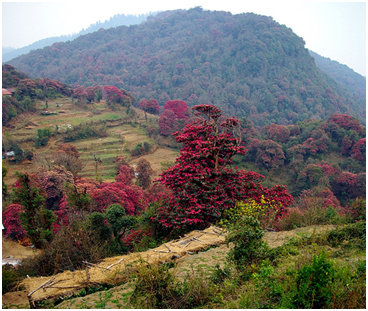 This includes the Mahabharat Lekh, which rises to a height of about 2400m and comprises the outer wall of the Himalayan range. Great rivers such as the Karnali, Narayani, and Sapta Koshi flow through this area into the broad plains of the Terai. This zone also includes the so-called middle hills which extend northwards in a somewhat confused maze of ridges and valleys to the foot of the great Himalayas. Among the tree species characteristic of this region are Castenopsis indica in association with Schima wallichii, and other species such as Alnus nepalensis, Acer oblongum and various species of oak and rhododendron which cover the higher slopes where deforestation has not yet taken place. Orchids clothe the stems of trees and gigantic climbers smother their heads. The variety and abundance of the flora and fauna increase progressively with decreasing altitude and increasing luxurance of the vegetation. This zone is generally poor in wildlife. The only mammals, which are at all widely distributed, are wild boar, barking deer, serow, ghoral and bears. Different varieties of birds are also found in this zone. Different varieties of birds are also found in this zone.
This includes the Mahabharat Lekh, which rises to a height of about 2400m and comprises the outer wall of the Himalayan range. Great rivers such as the Karnali, Narayani, and Sapta Koshi flow through this area into the broad plains of the Terai. This zone also includes the so-called middle hills which extend northwards in a somewhat confused maze of ridges and valleys to the foot of the great Himalayas. Among the tree species characteristic of this region are Castenopsis indica in association with Schima wallichii, and other species such as Alnus nepalensis, Acer oblongum and various species of oak and rhododendron which cover the higher slopes where deforestation has not yet taken place. Orchids clothe the stems of trees and gigantic climbers smother their heads. The variety and abundance of the flora and fauna increase progressively with decreasing altitude and increasing luxurance of the vegetation. This zone is generally poor in wildlife. The only mammals, which are at all widely distributed, are wild boar, barking deer, serow, ghoral and bears. Different varieties of birds are also found in this zone. Different varieties of birds are also found in this zone.
3. Temperate Evergreen Forest: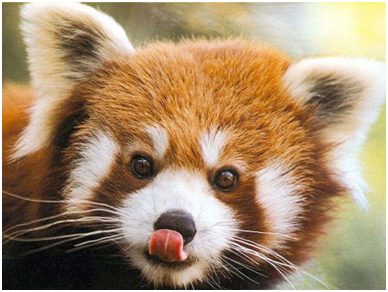 Northward, on the lower slopes and spurs of the great Himalayas, oaks and pines are the dominant species up to an altitude of about 2400m above which are found dense conifer forests including Picea, Tusga, Larix and Abies spp. The latter is usually confined to higher elevations with Betula typically marking the upper limit of the tree line. At about 3600 to 3900m, rhododendron, bamboo and maples are commonly associated with the coniferous zone. Composition of the forest varies considerably with coniferous predominating in the west and eracaceous in the east. The wildlife of this region includes the Himalayan bear, serow, ghoral, barking deer and wildboar, with Himalayan tahr sometimes being seen on steep rocky faces above 2400m. The red panda is among the more interesting of the mammals found in this zone; it appears to be fairly distributed in suitable areas of the forest above 1800m. The rich and varied avifauna of this region includes several spectacular and beautiful pheasants, including the Danfe pheasant, Nepal's national bird.
Northward, on the lower slopes and spurs of the great Himalayas, oaks and pines are the dominant species up to an altitude of about 2400m above which are found dense conifer forests including Picea, Tusga, Larix and Abies spp. The latter is usually confined to higher elevations with Betula typically marking the upper limit of the tree line. At about 3600 to 3900m, rhododendron, bamboo and maples are commonly associated with the coniferous zone. Composition of the forest varies considerably with coniferous predominating in the west and eracaceous in the east. The wildlife of this region includes the Himalayan bear, serow, ghoral, barking deer and wildboar, with Himalayan tahr sometimes being seen on steep rocky faces above 2400m. The red panda is among the more interesting of the mammals found in this zone; it appears to be fairly distributed in suitable areas of the forest above 1800m. The rich and varied avifauna of this region includes several spectacular and beautiful pheasants, including the Danfe pheasant, Nepal's national bird.
4. Subalpine and Alpine Zone: Above the tree line, rhododendron, juniper scrub and other procumbent woody vegetation may extend to about 4200m where it is then succeeded by t a tundra-like association of short grasses, sedge mosses and alpine plants wherever there is sufficient soil. This continues up to the lower limit of perpetual snow and ice at about 5100m. The mammalian faun is sparse and unlikely to include any species other than Himalayan marmots, mouse hare, tahr, musk deer, snow leopard and occasionally blue sheep. In former times, the wild Yak and great Tibetan sheep could also be sighted in this region and it is possible that a few may still be surviving in areas such as Dolpa and Humla. The bird life at such as lammergeyer, snowcock, snowpatridge, choughs and bunting, with redstarts and dippers often seen along the streams and rivulets. Yaks are the only livestock, which thrive at high altitude. They serve both back and draught animals. The cheeses prepared out of the milk are edible for months. The female Yak provides milk to the Sherpas.
Above the tree line, rhododendron, juniper scrub and other procumbent woody vegetation may extend to about 4200m where it is then succeeded by t a tundra-like association of short grasses, sedge mosses and alpine plants wherever there is sufficient soil. This continues up to the lower limit of perpetual snow and ice at about 5100m. The mammalian faun is sparse and unlikely to include any species other than Himalayan marmots, mouse hare, tahr, musk deer, snow leopard and occasionally blue sheep. In former times, the wild Yak and great Tibetan sheep could also be sighted in this region and it is possible that a few may still be surviving in areas such as Dolpa and Humla. The bird life at such as lammergeyer, snowcock, snowpatridge, choughs and bunting, with redstarts and dippers often seen along the streams and rivulets. Yaks are the only livestock, which thrive at high altitude. They serve both back and draught animals. The cheeses prepared out of the milk are edible for months. The female Yak provides milk to the Sherpas.
Of the wonderful flora and fauna must suffice to indicate what a paradise Nepal is to the lovers of wild animal and bird life, to the naturalists and to the foresters.

- History
- Overview
- Ancient Nepal
- The Early Kingdom of the Licchavis
- Medieval Nepal, 750-1750
- The Malla Kings
- The Three Kingdoms
- The Making of Modern Nepal
- The Struggle for Power
- The Enclosing of Nepal
- Infighting among Aristocratic Factions
- Rana Rule
- The Ranas
- The Growth of Political Parties
- The Return of the King
- The Democratic Experiment
- The Panchayat System under King Mahendra
- King Birendra
- Movement to restore democracy
- Maoist Insurgency
- Struggle for Democracy
- King's Direct Rule
- People's Movement
- The Constitutional Assembly Election
- Government and Political Conditions
- Geography
- Festivals of Nepal
- Overview
- Bada Dashain (September-October)
- Sri Panchami or Basanta Panchami
- Tihar and Laxmi Puja - festival of lights (Oct-Nov)
- Maghe Sankranti
- Naga Panchami
- Janai Poornima (Rokshya Bandhon)
- Gaijatra
- Pancha Dan
- Teej and Rishi Panchani
- Indrajatra
- Ghanta Karna
- Buddha Jayanti
- Maha Shivaratri
- Phagu Poornima or Holy
- Ghode Jatra
- Chaite Dashain
- Nava Varsha / New Year
- Festival of Seto Machhendranath
- Matatirtha Aunsi or Mother\'s Day
- Bala Chaturdashi
- Sri Krishna Janmastami
- Rama Nawami
- Mani Rimdu festival - Everest Region
- Tiji Festival, Mustang
- Dumje Festival - Everest Region
- Flora and Fauna of Nepal
- Flowering Plants of Nepal
- Getting in to Nepal
- Climate
- Nepal Visa Procedures
- Nepalese Embassies and Consulates Abroad
- Places visit in Nepal
- Orchids of Nepal
- World Heritage Sites of Nepal
Trekking in Nepal
Expeditions In Nepal
Rafting in Nepal
Tours in Nepal
All rights reserved.



